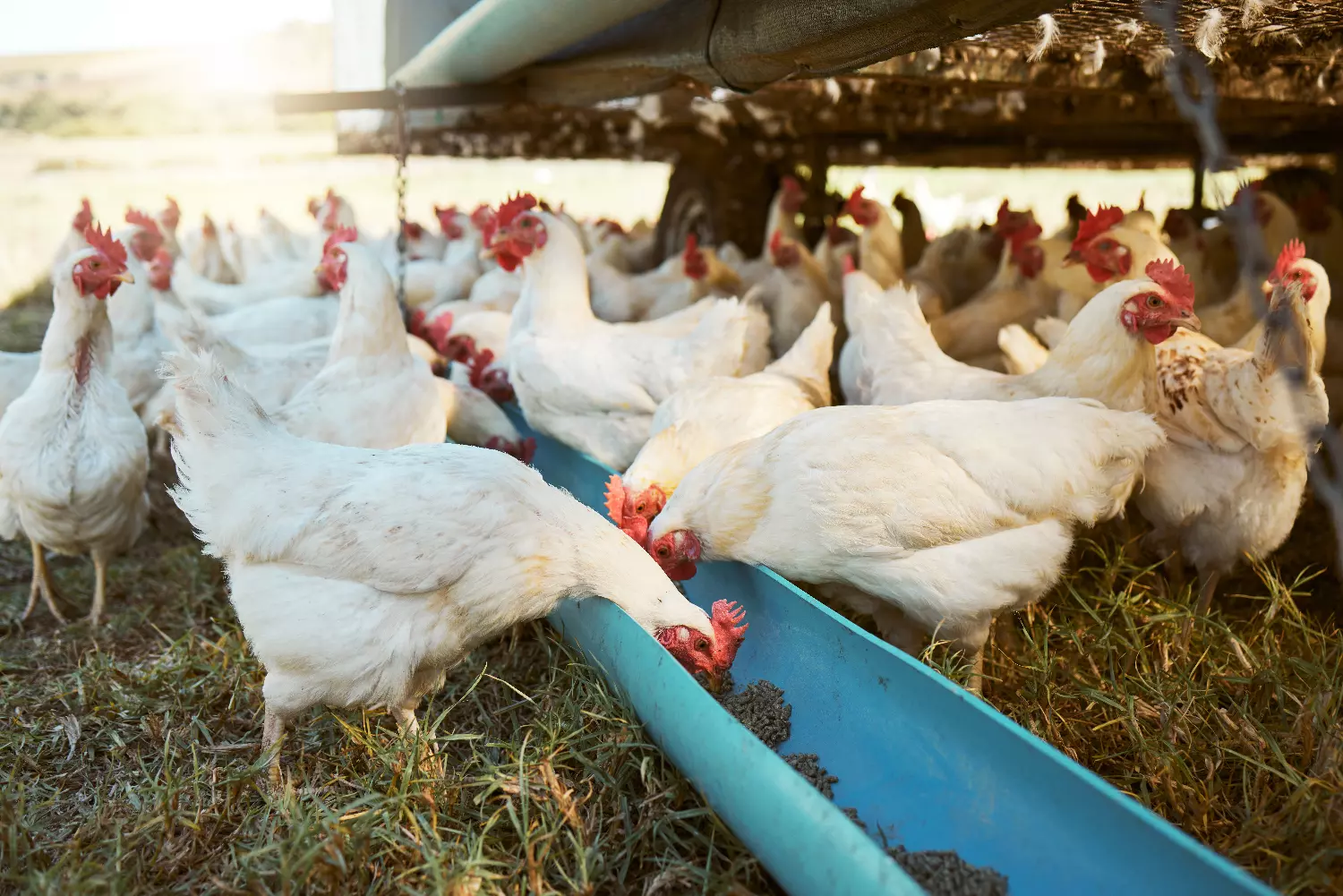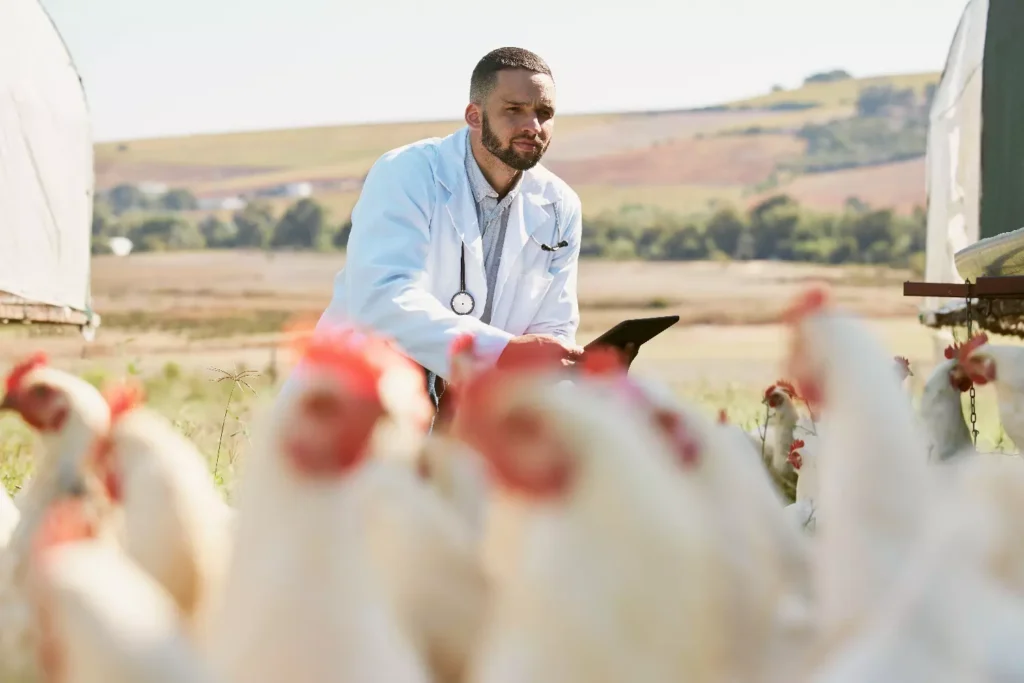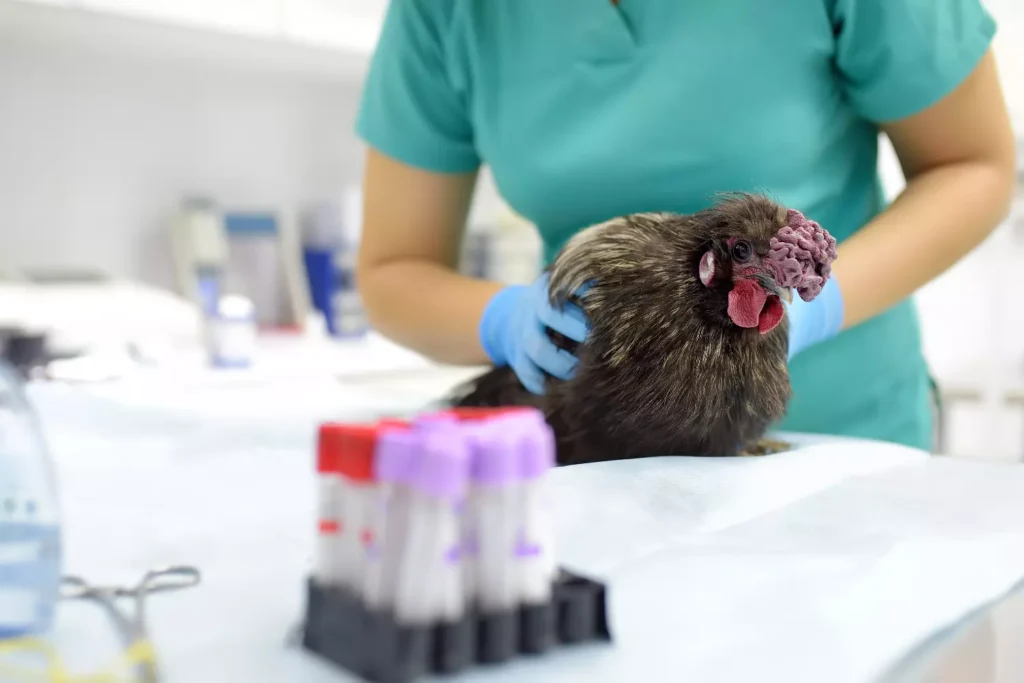
Infectious coryza is an acute or chronic disease-specific chickens, pheasants and game birds caused by the bacterium gram-negative, obligate Hemophilus paragallinarum. Can cause a severe drop in egg production and feed consumption, and the swelling of the beards in males.
The bacterial cultures and PCR, in veterinary care, can help identify the problem. If your flock has coryza, you must despoblarla, clean it and disinfect it in depth, and only reabastecerla with healthy chickens without antibiotics.
Symptoms
Infectious coryza is caused by a bacteria (Hemophilus gallinarum) and mainly affects chickens, but they can also be affected pheasants, quail and turkeys. It is a disease of the upper respiratory tract causing coughing and sneezing, poor feed conversion, low egg production, growth retardation and, in some cases, death. The bacteria are transmitted from bird to bird by direct contact, airborne droplets, or contamination of food and water. You can also pass through the egg, so it is important to follow a management practice of a flock of “everything inside, everything outside”.
The symptoms include swelling of the beards and under the eyes, as well as secretion, frothy, and foul-smelling from the nasal passages. The infection is usually diagnosed by a test of inhibition of hemagglutination, although the test reaction, polymerase chain reaction (PCR) is now available for fast results.
It is easy for the birds that are infected seem normal and will add to a flock, as they often show no outward signs of being ill. The disease progresses from mild to severe in a few days and the signs of the disease include: puffy face, inability to open the eyes and ooze a sticky about beards and the jaw. Eventually, the eyes can be closed completely, preventing the birds to eat and drink, which leads to a rapid decrease of the condition.
Swelling of the face can make the honeycomb to bulge out and turn pale, and it can be difficult for the hens to lay eggs. The spleen will develop an appearance of light, “sancochada,” and the liver will show bleeding pinpoint. Some birds will have pneumonia and one or both lungs are filled with fluid, which will make it difficult to breath.
The coryza is usually seen in pullets and laying hens, but can also affect broiler chickens. It can occur at any age of the poultry, but it is especially common in the fall, during the high season start. It is more likely to occur infections in places such as performances of poultry, exchange meetings and live bird markets where many birds are very close to each other.
Diagnosis
The bacteria responsible for infectious coryza thrives in damp and dirty, with little or no oxygen, such as chicken houses, crowded or poorly ventilated. The bacteria are transmitted through direct contact of poultry with poultry, infections in the air by dust or droplets of respiratory secretions and contamination of food and water. It can be difficult to know when the birds are infected with coryza, as the symptoms can resemble other diseases, including the syndrome of the swollen head (SHS), avian pox and the ornitobacterosis.
Swelling of the face and the beard is one of the clinical signs most recognizable of infectious coryza. The nasal secretion and ocular aqueous or similar to the pus is another obvious symptom. Other signs of infection include shortness of breath, sneezing, loss of appetite, loss of weight and reduction of egg production.
There is No cure for the infections that have already occurred, but antibiotics can reduce the symptoms and help the bird to overcome the disease more quickly. However, a veterinarian you must perform tests to ensure that the medication is appropriate for the type of infection and that it does not cause antibiotic resistance in the flock.
While it may seem easy to confuse the symptoms with something else, you should closely observe the flock, and, if a problem is detected, it must be treated immediately. If the outbreak is detected early enough, it is possible to save part of the herd.
The bacteria that cause coryza is highly contagious and is spread by direct contact between birds, tiny droplets in the air and contamination of food and water. Cannot propagate through the eggs. Infections are commonly introduced into the flock of poultry birds that seem healthy but are home to bacteria (birds carriers) and the deleted intermittently throughout their lives, or of new birds to join the flock. This is common in exhibition poultry, exchanges, bird and sales of live birds.
The disease also spreads easily in facilities of various ages which are added pullet young people to a group of layers older.
Infectious coryza is caused by a bacterium, Avibacterium paragallinarum, which is located in the upper respiratory tract of the chicken. The bacterium can be isolated by means of plates, swabs, breast infraorbital, the trachea or the air bag. Alternatively, the pathogen can be detected directly by using a PCR assay (HP-2 PCR) assay that is more sensitive than traditional culture.
If a farm experiencing an outbreak, it is recommended that all flock to empty and clean and disinfect thoroughly before bringing new replacements. This will decrease the probability of transferring the virus to the new flock. It is also recommended the use of a vaccine to prevent future outbreaks.

Treatment
Fortunately, infectious coryza disease is a very treatable with antibiotics. However, it is important to get the right medication and the right dose. The antibiotic incorrect, you can create resistance in your flock and will not cure the infection. It is also important to use a veterinarian who has experience in the treatment of poultry.
The treatment is usually given as a combination of drugs which include erythromycin, oxytetracycline, and trimethoprim-sulfamethoxazole. These are administered orally in the drinking water or drip on the affected bird. In addition to the medication antimicrobial, vitamin C and garlic may help.
Vaccines are available to prevent infectious coryza in poultry, although they can be costly and may require multiple vaccinations before they become effective. Prevention is the best strategy, and a good management and sanitation rigorous are essential. The use of a program, all inside and outside to remove the contact between birds infected and not infected, a chicken coop clean without land or food spilled, and a proper disposal of dead birds can decrease the risk of outbreaks.
If a flock is infected, you should perform cleaning and disinfection to bottom of chicken coops and pens to remove any debris that may harbor the bacterium. A veterinarian can perform the appropriate tests to determine which antibiotics will be most effective for treating the outbreak. Always use the prescribed medication by your veterinarian, as incorrect use can worsen the disease and create resistance to antibiotics in the future.

Prevention
As mentioned above, prevention is the best approach to avoid an outbreak of infectious coryza. Good sanitation and management system all in/all out are essential, as well as the separation of the birds carrying the susceptible. Whenever possible, you should avoid the shows, exchanges and sales of live birds, as this may expose the birds to many different pathogens. It is also a good idea to breed their own birds of replacement and purchase only chickens initiated from clean sources, which have been in quarantine.
Good biosecurity practices can help prevent this disease by limiting the amount of time you spend on other farms and avoid wearing clothes or footwear that can contain the bacteria. Put in quarantine new birds for 30 days before adding them to the flock, and separate them from other chickens until then also. The use of a vaccine is also useful, but the vaccine does not protect against all strains of the disease and the birds vaccinated will continue to operate as carriers.
Other prevention strategies to control this disease include poor sanitation programs, and a comprehensive program to limit contact between birds susceptible and infected. Put in quarantine new birds or purchased, because you can carry not only infectious coryza, but also other bacterial diseases more virulent and dangerous.